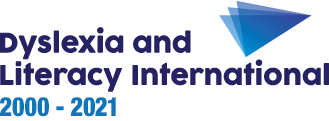Pages in Section 1
Summary of the three ‘stages’ in the development of word reading
The three major ‘stages’ in learning to read words are known as:
Logographic or pre-reading stage
Some words are recognized as wholes, like pictures or photos, based on their distinctive visual features and colours.
Alphabetic stage leading to the decoding system
In this stage, the child develops representations of ‘sounds’ and ‘letters’, which allow him or her to decode written words in three steps:
- The written word is broken up into its constitutive ‘letters’
- Each ‘letter’ is mapped onto its corresponding ‘sound’
- The ‘sounds’ are assembled to form the pronunciation of the word
Orthographic stage leading to the direct access system
In this stage, the child is progressively building complete and organized representations of written words (orthographic representations) and of spoken words (phonological representations), which are linked together.
This allows the written words to be automatically recognized, and their complete pronunciation to be directly accessed.
We have described ‘stages’ for establishing the development of word reading, but the notion of separate stages as if one stage has to be completed before the child can get to the next one, is an oversimplification.
In fact, the progressive establishment of complete and ordered orthographic and phonological representations of words, which allows direct access, does not follow ‘stages’, but is accomplished word by word at different points of literacy development.
Read on:
If you want to learn more about the progressive memorization of the words as complete entities, one by one
if you want to know more about the different models of stages for the acquisition of reading.
Beyond the identification of words
The development of sufficiently automated mechanisms for word identification is a prerequisite for the comprehension of phrases and texts but, clearly, in itself it is not enough. We read for understanding. Comprehension is actually a complex ability involving a large number of processes as well as the skill to adjust the processing strategy in the course of reading. In a large review of the scientific literature covering studies between 1980 and 2000, experts from the National Reading Panel, USA, identified three important factors in the development of written language comprehension:- – understanding of written text cannot be considered without looking at the critical role of learning and the development of vocabulary
- – comprehension involves a mutual exchange of ideas between the reader and the text, that is to say a deliberate process of thinking, much like solving a problem
- – comprehension requires active involvement and engagement through which learners arrive at a shared interpretation and explicitly exchange ideas about the mental processes and cognitive strategies they are using to understand the text


